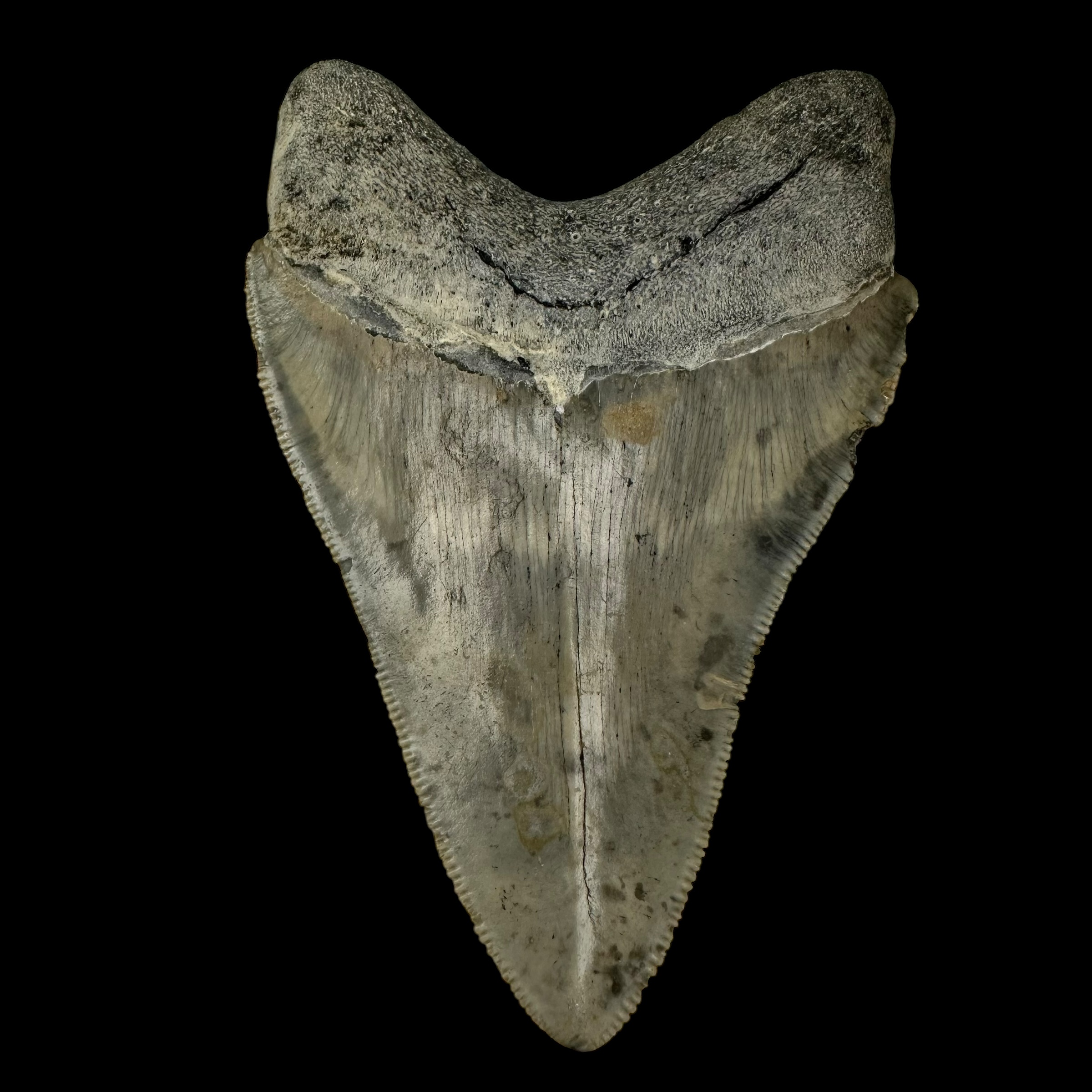Prehistoric Giants: Unveiling the 5 Largest Megalodon Teeth Ever Found

Prehistoric Megalodon Teeth: Unveiling the Largest Fossil Discoveries
For millions of years, the Megalodon ruled the ancient oceans. Its massive size, unparalleled bite force, and razor-sharp teeth made it the ultimate apex predator. Today, the only remnants of this legendary shark are its prehistoric teeth, which continue fascinando a científicos y coleccionistas de fósiles.
In this article, we’ll explore the largest Megalodon teeth ever found, their significance in paleontology, and where these ancient relics have been uncovered.
🦷 How Big Were Megalodon’s Teeth?
One of the defining features of the Megalodon was its enormous teeth. While modern sharks have teeth that rarely exceed 3 inches (7.6 cm), these prehistoric predators had teeth reaching up to 7 inches (17.8 cm) or more! These massive fossils provide insight into the size of this giant, with some estimates suggesting it could reach lengths of over 60 feet (18 meters).
Some of the largest Megalodon teeth ever discovered include:
✅ A 7.48-inch (19 cm) tooth, found in Peru.
✅ A 7.25-inch (18.4 cm) fossil, unearthed in South Carolina, USA.
✅ Several 7-inch (17.8 cm) specimens recovered from deep-sea fossil beds.
📍 Where Are These Fossils Found?
Fossilized Megalodon teeth have been uncovered all over the world, but some locations are particularly famous for producing the biggest and best-preserved specimens:
🌊 North Carolina & South Carolina, USA – Riverbeds like the Cooper River are rich in fossils.
🏝 Florida, USA – Venice Beach is known as the “Shark Tooth Capital of the World.”
🏜 Morocco – Ancient seabeds reveal well-preserved shark fossils.
🇵🇪 Peru – Some of the largest specimens have been found here.
🇦🇺 Australia – Coastal rock formations hold impressive finds.
If you’re looking to own a real Megalodon fossil, The Fossil Exchange offers authentic specimens sourced from these regions!
🔎 How to Identify a Genuine Megalodon Tooth
With so many fossils on the market, it’s important to know how to identify an authentic one:
✔️ Size & Shape: Much larger and thicker than modern shark teeth.
✔️ Coloration: Fossils vary in color depending on the minerals in the sediment.
✔️ Enamel & Serrations: Well-preserved edges indicate authenticity.
If you’re unsure, always buy from a trusted fossil dealer like The Fossil Exchange!
❌ Why Did the Megalodon Go Extinct?
Despite being an apex predator, the Megalodon disappeared around 3.6 million years ago. Scientists believe multiple factors contributed to its extinction:
🔥 Climate Change: Cooling ocean temperatures reduced food sources.
🐋 Competition: Early great white sharks and orcas may have outcompeted it.
🌊 Ecosystem Shifts: Prey population changes likely led to food shortages.
While this giant is gone, its fossilized remains give us a glimpse into prehistoric marine life.
⚡ Own a Piece of History
Holding a Megalodon tooth is like holding a relic from a lost world. Whether you’re a collector, a fossil enthusiast, or simply fascinated by ancient oceans, these fossils offer an incredible connection to Earth’s past.
At The Fossil Exchange, we bring these legendary fossils straight to your hands. Explore our exclusive collection of authentic Megalodon teeth today!
🔗 Shop Now
🔗 Explore More About Megalodon and Fossil Hunting
Si quieres profundizar en la historia del Megalodon y aprender más sobre la búsqueda de fósiles, aquí tienes algunos recursos valiosos:
📖 Smithsonian Megalodon Facts – Descubre información científica detallada sobre el Megalodon y su extinción.
🔗 Visitar el Smithsonian
🌍 National Geographic Fossil Hunting Guide – Aprende consejos expertos sobre cómo encontrar fósiles en diferentes regiones del mundo.
🔗 Leer en National Geographic
🔬 Paleontological Research Institution – Explora investigaciones científicas sobre fósiles y la evolución de los tiburones prehistóricos.
🔗 Explorar la PRI
Incluir enlaces externos confiables no solo mejora la experiencia del lector, sino que también fortalece la autoridad de tu contenido en SEO. 🚀
In our store we have real Megalodon teeth for sale
-
Other Shark Species
Great White Tooth Fossil 1.88″
$110.00Original price was: $110.00.$99.00Current price is: $99.00. Add to cart -
Other Shark Species
Great White Tooth Fossil 1.58″
$120.00Original price was: $120.00.$108.00Current price is: $108.00. Add to cart -
Other Shark Species
Great White Tooth Fossil 1.61″
$80.00Original price was: $80.00.$72.00Current price is: $72.00. Add to cart



